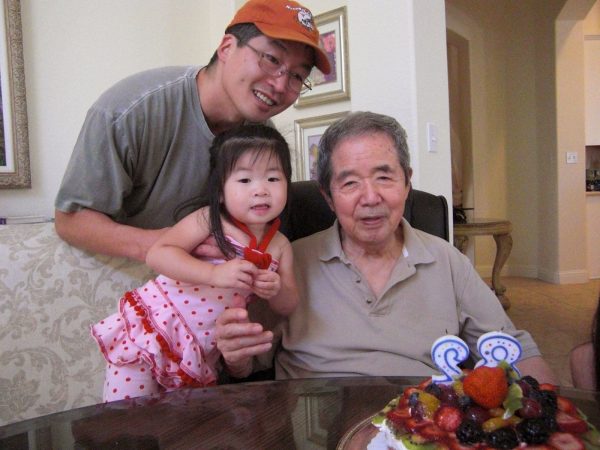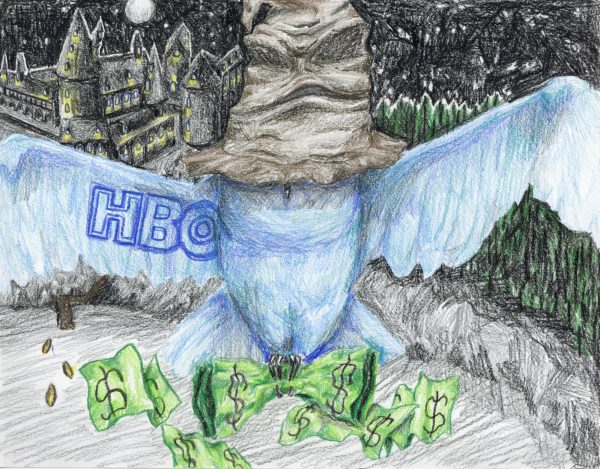How I grew up with Lady Gaga
When pop sensation Lady Gaga released her first album The Fame, I was 9 years old. Boys still had “cooties,” my dreams of going to Harvard were still alive, and I still obeyed my parents’ wishes.
Only just beginning to listen to pop music, I felt a sort of awakening upon discovering Gaga. For the most part, I had only been subjected to the music that my parents listened to, so when I heard the techno beats, untraditional melodies and provocative lyrics that The Fame soon became so … well … famous for, I couldn’t help but wonder: was all pop music like this?
I soon discovered the answer to that question was a resounding no. While Gaga could easily be compared in style to the likes of Madonna and David Bowie, no modern artist could really be compared to Gaga. Her rhythms were different, her voice was different, her look was different, and her message was different. The Fame was a breath of fresh air amidst all the Nickelbacks and Kelly Clarksons of the early 2000s.
After I bought The Fame on iTunes (it was actually my first iTunes purchase ever), it was only a matter of weeks before I knew every word, note and instrumental interlude on the album. It was an obsession. My sister and I dressed up in the wildest costumes we could find and ran around our apartment scream-singing the promiscuous lyrics to Gaga songs, much to my mother’s chagrin.
Of course, close to none of Gaga’s lyrics actually pertained to my life as a 9-year-old kid — I was far too young to understand any of the sexual innuendos, much less the thematic satire throughout the album — but still I felt a deep connection to every word, note and sentiment that Gaga delivered.
I had never been broken up with (or even been in a relationship, for that matter), but I had brown eyes. So, logically enough, the song entitled “Brown Eyes” had to be about me, right?
I was infatuated with the third grader in my spelling class (some would call it love), so naturally the song “Boys Boys Boys,” an anthem written for the sole purpose of appreciating the opposite gender, spoke to me on an emotional level. It was no matter that the boys my friends and I were interested in could neither drive cars nor “buy us drinks in bars.”
I guess it was the character and energy that made it seem like The Fame was a reflection of my 9-year-old self — it was upbeat, optimistic and just fun. Even as a child, I noticed that similarity, and I cherished it, creating a close bond with my favorite album and the artist who created it. From then on, Lady Gaga was an integral part of my life.
Of course, as time passed, many aspects of my life changed — I started having real interest in boys, my dreams for the future became more realistic, and I partook in small acts of rebellion against my parents. But as I grew and matured, so did Lady Gaga — not only as a musician, but as a person as well. The early stages of Gaga were over-the-top and arguably nonsensical (see: meat dress), much like I was as a silly, attention-seeking child. But soon, she started evolving, much like myself, into a more serious musician and thinker. By the time ARTPOP was released in 2013, I was almost equally as interested in Gaga the feminist, activist, humanitarian as I was in Gaga the singer, songwriter, performer.
Now, as Gaga releases her fifth studio album Joanne, I once again can relate to the personality shift that has occurred. In her last three years on a music hiatus, Gaga has done a lot of soul searching, dabbling in acting and charity work that has been well-received by the public. She has become more focused and more driven by purpose.
While many tracks on Joanne still have the buoyant sound that first made me fall in love with her (“A-YO,” “John Wayne” and “Perfect Illusion”), it also has a much more serious side that denotes greater meaning. There are no jokes; there is little satire, which at first, I admit, is a bit of a letdown — once I was old enough to understand it, Gaga’s ironic mockery of pop culture is what kept me so interested in her art. However, once I got past this small loss, I was able to better understand the messages that Gaga intended to deliver with this unconventional album.
Titled after her late aunt who had notable influence on Gaga’s life, Joanne is more emotional, more thoughtful and much more serious than any of her previous albums. It’s also far more modest and understated. In writing Joanne, Gaga’s goal was not to create the next biggest club anthems — she already had enough of those. Instead she departed from the genre she already knew and did so well and explored a variety of genres, ranging from ’90s rock to ballads to even country. Joanne proves the versatility of Gaga’s abilities as a musician and shows how she has developed as a person.
As for me, the last few years have been increasingly formative as well. As cheesy as it sounds, I too have been focused on what’s most important in my life and discovered what mark I want to make on the world, however big or small it may be. And honestly, Lady Gaga has been there every step of the way.
I was first introduced to Gaga right about the time that I began maturing into who I am today. The mind of a 9-year-old is curious and impressionable. If I was any other age when Lady Gaga emerged onto the music scene, I don’t think I would feel a connection anywhere near that which I currently feel towards her music and her as a person. Despite our differences in ages, locations and lifestyles, I genuinely feel like Lady Gaga and I grew up together, she in her music and public image, and me in my general maturity and understanding of the world. Many of my best experiences and happiest memories have been accompanied by Lady Gaga, and as I continue to watch and listen to her I’m left with just one question: where will we go next?





